Greenhouse farming has emerged as a revolutionary method of agricultural production in Saudi Arabia. The country faces unique challenges in traditional farming due to its arid climate and limited water resources. However, through the implementation of greenhouse structures, Saudi Arabia has unlocked the potential for year-round cultivation of crops.
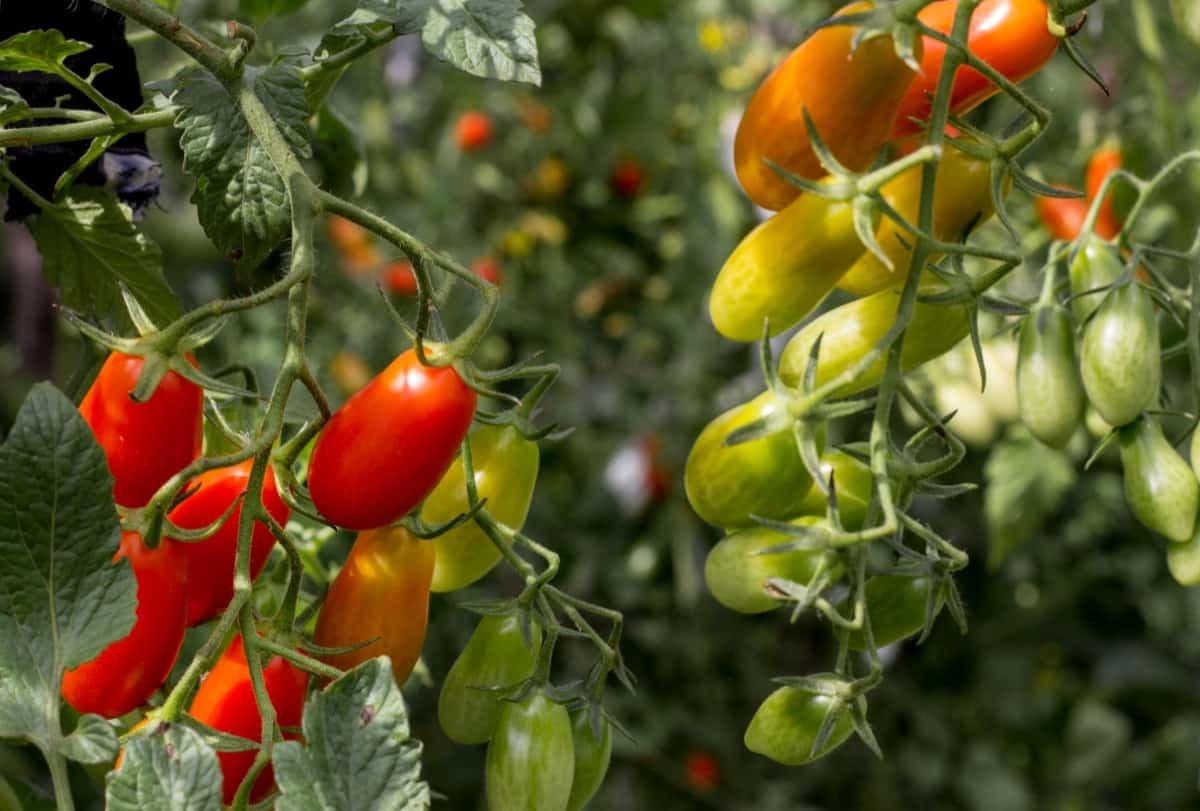
These controlled environments provide optimal conditions for plant growth, protecting crops from extreme temperatures and allowing for efficient water usage. Greenhouse farming in Saudi Arabia is improving food security and promoting sustainable practices by reducing the reliance on imported produce. It represents a promising solution to enhance agricultural productivity and ensure a greener future for the country.
What is Greenhouse Farming in Saudi Arabia?
Greenhouse farming in Saudi Arabia refers to the practice of cultivating crops within controlled environments using greenhouse structures. These structures provide ideal conditions for plant growth by regulating temperature, humidity, and light. In Saudi Arabia’s arid climate, greenhouse farming has become crucial for agricultural production.
It allows for year-round cultivation and protection of crops from extreme temperatures and pests. Greenhouses in Saudi Arabia utilize advanced technologies like hydroponics, automated irrigation, and climate control systems to optimize resource usage. This innovative farming method promotes sustainable practices, reduces water consumption, and contributes to the country’s food security goals.
Key Overview on Greenhouse Farming in Saudi Arabia
Saudi Arabia is a leading market for greenhouse farming, with techniques such as hydroponics, aeroponics, and traditional soil-based cultivation. These techniques enable farmers to control environmental factors like temperature, humidity, and light, optimizing crop growth. The best greenhouse crops in Saudi Arabia are tomatoes, cucumbers, bell peppers, eggplants, and lettuce.
The cost and profitability of greenhouse farming in Saudi Arabia vary based on size, construction materials, and technology. Climate control systems, pest and disease management, irrigation systems, and automation technologies are essential for optimizing greenhouse operations. Saudi Arabia has regulations and permits governing greenhouse construction, water usage, pesticide use, and environmental considerations.
In case you missed it: Greenhouse Chrysanthemum Farming Cost and Profitability Analysis
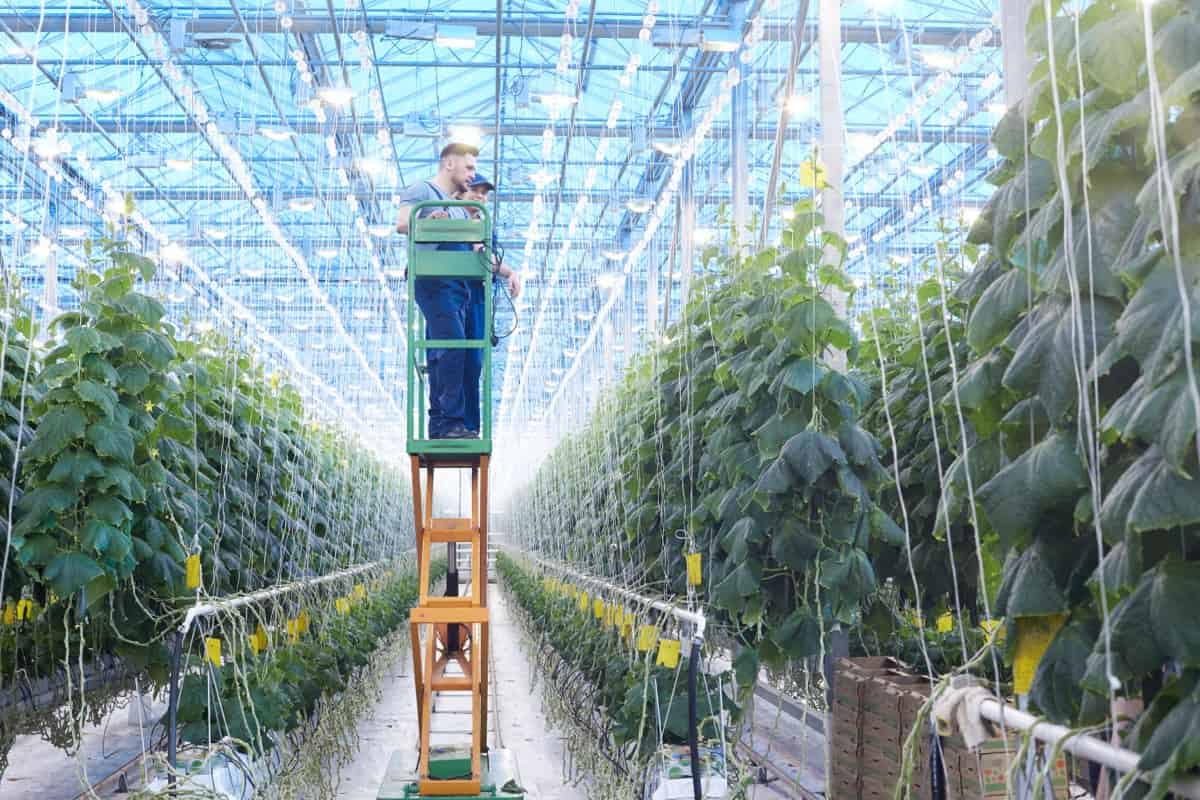
Training programs and courses are available to educate farmers on greenhouse farming techniques, crop management, and technology utilization. Organic greenhouse farming practices follow organic principles and avoid synthetic pesticides and fertilizers. Hydroponic farming, a soilless cultivation method, is gaining popularity in Saudi Arabian greenhouses, providing plants with essential minerals and resulting in efficient resource utilization and higher yields.
Sustainable practices in Saudi Arabian greenhouse farming include water conservation, energy efficiency, waste management, and renewable resources. Case studies showcase successful greenhouse farming ventures in Saudi Arabia, highlighting innovative practices, crop selection, and profitability. Solutions to challenges include adopting energy-efficient technologies, implementing water-saving techniques, utilizing integrated pest management, and exploring niche markets. Vertical farming, a space-efficient technique, is gaining attention in Saudi Arabian greenhouses.
Best Greenhouse Farming Techniques in Saudi Arabia
- Hydroponics and aeroponics are popular techniques used in Saudi Arabian greenhouses, allowing plants to grow without soil.
- High-tech climate control systems, such as automated ventilation and cooling, are employed to maintain optimal growing conditions.
- Integrated Pest Management (IPM) techniques are adopted to minimize the use of pesticides and ensure sustainable pest control.
- Drip irrigation and fertigation systems are utilized for efficient water and nutrient management.
- Vertical farming and stacking systems are implemented to maximize space utilization.
- Due to the controlled environment, different crops can be grown in Saudi Arabian greenhouses, including tomatoes, cucumbers, peppers, lettuce, herbs, strawberries, and flowers.
- Exotic crops like bell peppers, cherry tomatoes, and baby cucumbers are increasingly popular for export.
Benefits of Greenhouse Farming in Saudi Arabia
- Greenhouse farming in Saudi Arabia enables year-round production, reducing dependence on seasonal variations.
- The controlled environment protects crops from extreme temperatures, pests, and diseases, resulting in higher yields and improved crop quality.
- Water conservation is achieved through precise irrigation systems, reducing water consumption compared to traditional farming methods.
- Greenhouses contribute to food security by reducing reliance on imported produce and creating employment opportunities.
- Greenhouse farming reduces the need for chemical inputs, promoting sustainable and environmentally friendly agricultural practices.
How to Start a Greenhouse Farm in Saudi Arabia
- Conduct thorough market research to identify viable crops and potential customers.
- Acquire suitable land or repurpose existing structures for greenhouse construction.
- Invest in high-quality greenhouse infrastructure and technology.
- Establish a reliable water supply and implement efficient irrigation systems.
- Develop a crop management plan, including pest control and nutrient management.
- Ensure compliance with local greenhouse farming regulations and obtain necessary permits.
- Saudi Arabia has specific regulations and guidelines for greenhouse farming, including land use, water usage, and environmental considerations.
- It is essential to adhere to pesticide regulations, ensuring safe and sustainable farming practices.
- Farmers may need to register their greenhouse operations and comply with quality standards to maintain product integrity.
In case you missed it: Ultimate Guide to Greenhouse Irrigation and Water Management
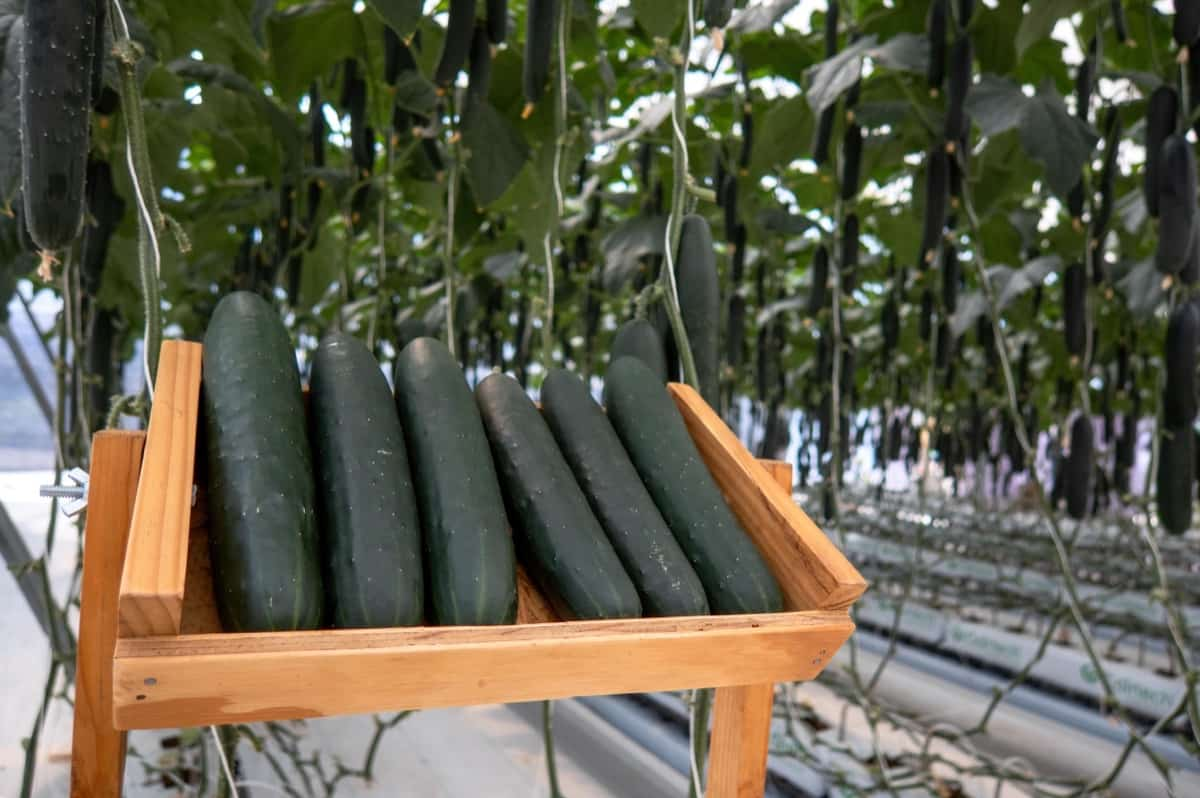
Greenhouse Farming Technologies Used in Saudi Arabia
- Saudi Arabian greenhouse farms employ advanced technologies, including computerized climate control systems, automated irrigation systems, and remote monitoring and control systems.
- Energy-efficient lighting systems, such as LED grow lights, are utilized to optimize plant growth.
- Sophisticated sensors and data analytics enable precise monitoring of temperature, humidity, and other environmental parameters.
- Drip irrigation and fertigation systems minimize water wastage by delivering water and nutrients directly to plant roots.
- Water recycling and reuse systems are implemented to reduce overall water consumption.
- The Saudi Arabian government provides various financial incentives, grants, and subsidies to support greenhouse farming initiatives.
- These incentives promote sustainable agriculture, increase food production, and reduce import dependence.
Types of Greenhouses in Saudi Arabia
Plastic greenhouses, particularly those using polycarbonate-based transparent plastic sheeting, are gaining popularity due to their superior heat retention and durability. These greenhouses help maintain the ideal temperature for crop development and result in substantial energy savings. Commercial greenhouses widely use heating systems to maintain the required humidity and temperatures, enabling year-round cultivation and maximizing crop production.
The demand for fruits and vegetables in Saudi Arabia is increasing, and commercial greenhouses play a vital role in meeting this demand by ensuring consistent and high-quality crop growth. Venlo greenhouses are popular in Saudi Arabia, offering efficient light transmission and ventilation. Tunnel greenhouses are cost-effective and suitable for small-scale farming, while multi-span greenhouses offer flexibility and versatility in crop selection.
Net houses provide shade and protection from harsh sunlight, while hybrid greenhouses combine construction materials and techniques for insulation, light transmission, and energy efficiency. These greenhouse types are adapted to Saudi Arabia’s climate to create controlled environments that ensure optimal growing conditions for crops. The selection of a specific greenhouse type depends on factors such as crop requirements, available resources, and the desired level of automation.
Greenhouse Farming Techniques in Saudi Arabia
- Saudi Arabia has adopted modern greenhouse farming techniques to revolutionize agricultural practices, enabling efficient and sustainable crop production. These techniques include hydroponics, aeroponics, high-tech climate control, vertical farming, LED lighting, integrated pest management (IPM), precision irrigation, and automation and remote monitoring.
- Hydroponic systems grow plants without soil, delivering nutrient-rich water directly to plant roots, optimizing resource usage, and reducing water consumption.
- Aeroponics suspend plant roots in the air, misting nutrients and promoting faster growth rates and water efficiency. High-tech climate control systems regulate temperature, humidity, and ventilation, ensuring optimal growing conditions, higher yields, and superior crop quality.
- Vertical farming techniques maximize space utilization, while LED lighting provides specific light spectra for optimal plant growth. Integrated Pest Management (IPM) techniques manage pests and diseases sustainably, using beneficial insects, biological controls, and monitoring systems.
- Precision irrigation systems deliver water directly to plant roots, reducing water wastage and optimizing water usage. Finally, automation and remote monitoring systems enable farmers to remotely monitor and adjust environmental factors and crop conditions, improving efficiency and productivity.
In case you missed it: Rice Cultivation in Greenhouse: A Profitable Business Plan for Sustainable Farming
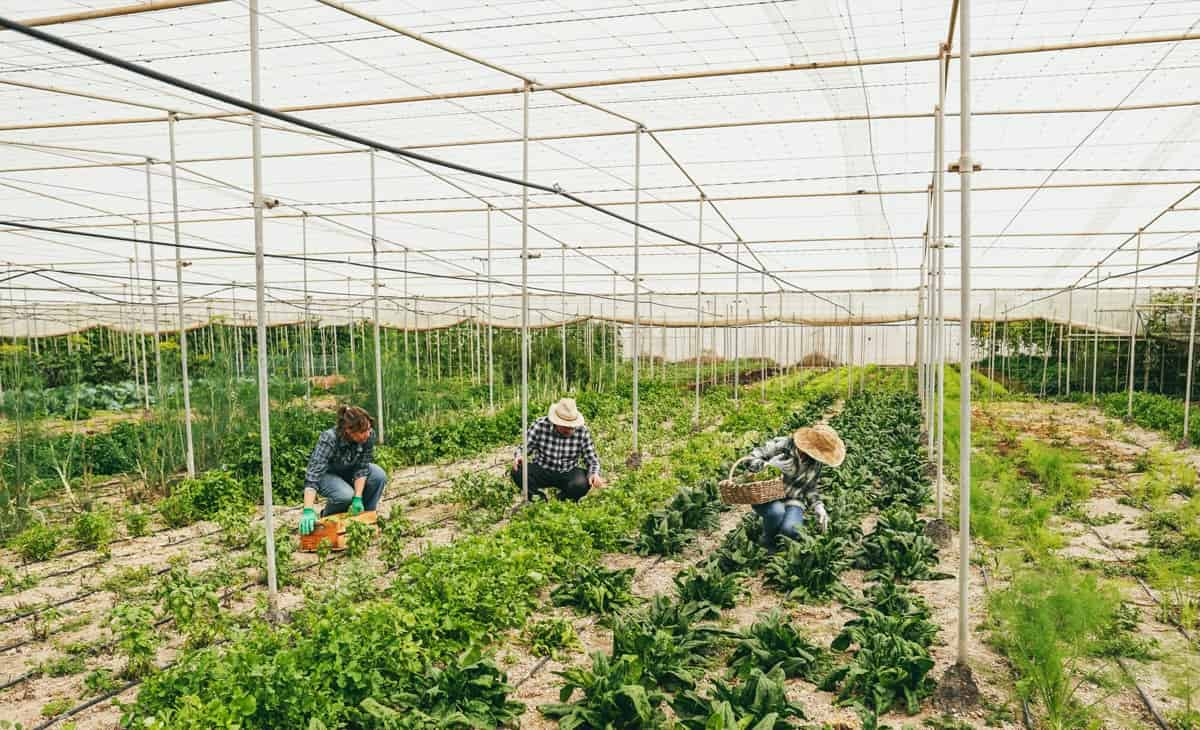
Sustainable Practices in Saudi Arabia Greenhouse Farming
In Saudi Arabia, sustainable practices in greenhouse farming include efficient water management, renewable energy integration, integrated pest management, soil health, and nutrient management, waste management and recycling, and proper waste segregation and recycling systems. These practices include drip irrigation systems, water recycling, rainwater harvesting techniques, hydroponic systems, monitoring soil moisture levels, mulching, and solar panels.
Renewable energy technologies, biomass systems, natural lighting, and energy management systems are also employed to minimize electricity consumption and improve greenhouse operations. Integrated pest management, soil health and nutrient management, waste management, and recycling are also implemented to promote healthy plant growth and reduce environmental impact.
Climate Control Systems for Saudi Arabia Greenhouses
- Climate control systems are crucial in greenhouse farming in Saudi Arabia, ensuring optimal crop growth conditions. To combat the hot climate, evaporative cooling pads and high-pressure misting systems are implemented to reduce temperatures.
- Shade cloths or nets are integrated to provide shade and alleviate heat stress, while ventilation systems and fans remove hot air to maintain airflow. Gas or oil heaters are adopted during colder periods to maintain ideal temperatures.
- Geothermal heating systems are also utilized to reduce energy consumption. Heat retention curtains and thermal screens conserve heat, and hot water pipes beneath growing beds provide soil heating.
- Humidity control is achieved by installing humidifiers or fogging systems to increase moisture levels, while dehumidifiers prevent excessive moisture and disease risks.
- Proper irrigation techniques are implemented to manage humidity levels effectively. Light management involves shading systems to regulate light intensity, supplemental lighting for year-round cultivation, and light-diffusing materials to ensure even light distribution.
- Environmental monitoring is crucial, with sensors measuring temperature, humidity, light, and CO2 levels. Automated systems adjust climate controls based on sensor data, and computerized control systems enable precise climate management. These climate control systems contribute to sustainable and efficient greenhouse farming in Saudi Arabia, providing optimal growing conditions and maximizing crop yields.
Crop Selection for Saudi Arabia Greenhouse Farming
In Saudi Arabia, greenhouse farming offers different crop recommendations for greenhouse cultivation. Tomatoes are a highly sought-after crop due to their versatility and nutritional value. They require good sunlight exposure and well-drained soil, with varieties like Cherry, Roma, and Beefsteak suitable for greenhouse cultivation. Cucumbers are a fast-growing crop with high water content, suitable for greenhouse cultivation at 22-28°C with 60-80% relative humidity.
Bell peppers are a highly profitable crop with good market demand, with ideal temperatures between 20-30°C and 60-70% relative humidity. Eggplants are popular for their nutritional value and culinary uses, with ideal temperatures between 20-30°C and 50-70% relative humidity. With a wide range of varieties, leafy green lettuce is suitable for greenhouse cultivation in Saudi Arabia. Regular watering and shade cloth can help prevent bolting in hot climates.
In case you missed it: Greenhouse Farming in Germany: Crops, Set-Up Cost, Subsidy, and Loans
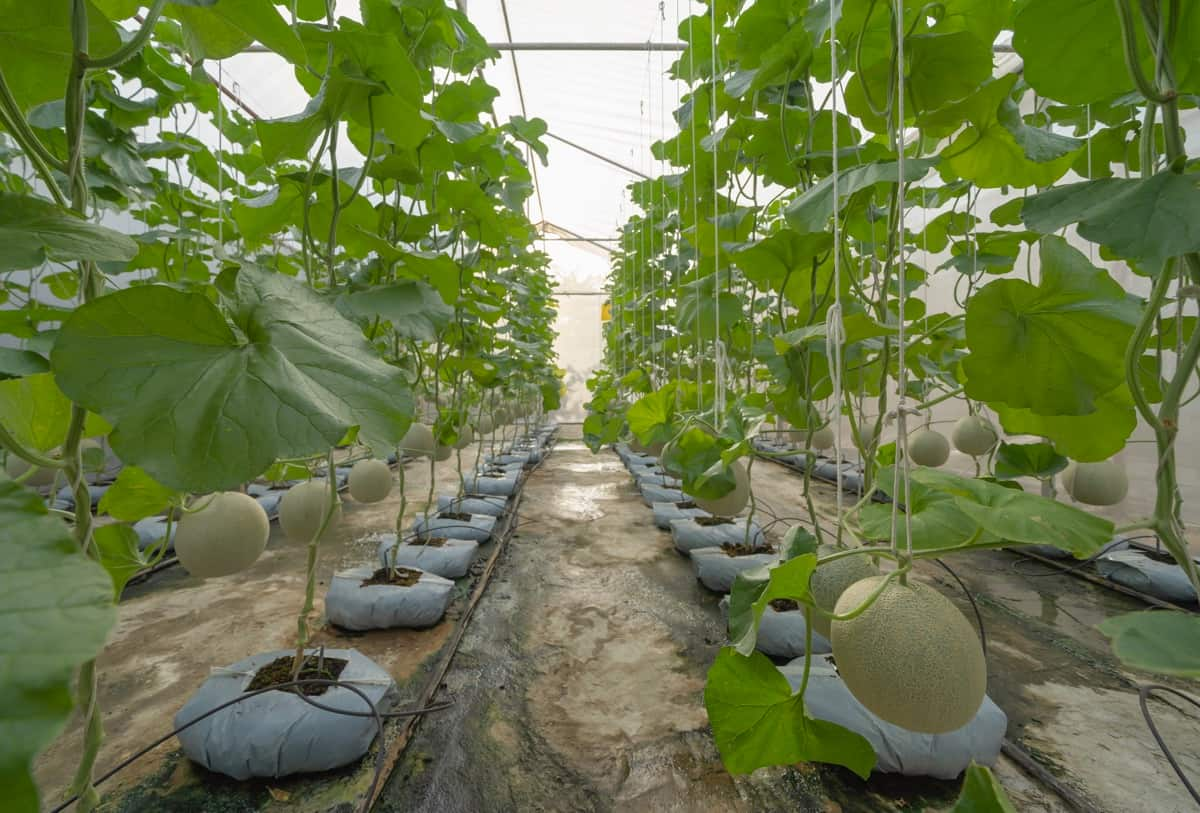
Pest and Disease Management in Saudi Arabia Greenhouse Farms
Effective pest and disease management is crucial for maintaining healthy greenhouse crops in Saudi Arabia. IPM techniques include introducing natural predators like ladybugs or insecticidal soaps, preventing infestations, and controlling whiteflies, thrips, powdery mildew, and botrytis.
Regular monitoring, early detection, introduction of beneficial insects, proper sanitation, use of resistant crop varieties, application of organic pesticides and fungicides, adoption of cultural practices like crop rotation and proper irrigation, and strict hygiene protocols are employed to prevent pest and disease introduction. By implementing these techniques, Saudi Arabia can ensure its greenhouse crops’ continued growth and health.
Greenhouse Automation Technologies in Saudi Arabia
Greenhouse automation technologies in Saudi Arabia are revolutionizing the agricultural industry by enhancing efficiency, reducing resource consumption, and promoting sustainable practices. These technologies include climate control systems, irrigation systems, nutrient management, lighting control, data monitoring and analysis, and data analysis.
Climate control systems monitor and regulate the greenhouse’s temperature, humidity, and CO2 levels, while irrigation systems deliver water precisely to plants based on their needs. Sensors and timers control the frequency and duration of irrigation cycles, ensuring water efficiency and adequate moisture for plants. Nutrient management systems accurately measure and control nutrient levels, promoting healthy plant growth and maximizing yields.
Lighting control systems regulate artificial lighting, mimicking natural sunlight, particularly during low-light periods or for crops with specific light requirements. Data monitoring and analysis enable farmers to make informed decisions, improve resource allocation, and increase productivity. However, it is essential to select appropriate technologies based on specific crop requirements and local conditions and ensure proper maintenance and monitoring for optimal performance.
Market Trends and Opportunities in Saudi Arabia Greenhouse Farming
Increasing agricultural productivity is crucial for ensuring food security and preserving natural resources. Adopting new agricultural technologies and management methods has led to higher yields, improved resource management, and reduced environmental impact. Greenhouse farming is a modern agricultural technique that can significantly boost crop yield by providing optimal temperature conditions and protection against harsh climates and pests.
The market is expected to recover as the situation improves. The Saudi Arabia commercial greenhouse market report highlights its value, application distribution, and the industry’s drivers, challenges, and ongoing trends. The commercial greenhouse market in Saudi Arabia is rapidly growing, offering glass and plastic greenhouses equipped with cooling and heating systems.
In case you missed it: How to Start Greenhouse Farming in Bihar: Crops, 1 Acre Greenhouse Cost, Subsidy, and Loans
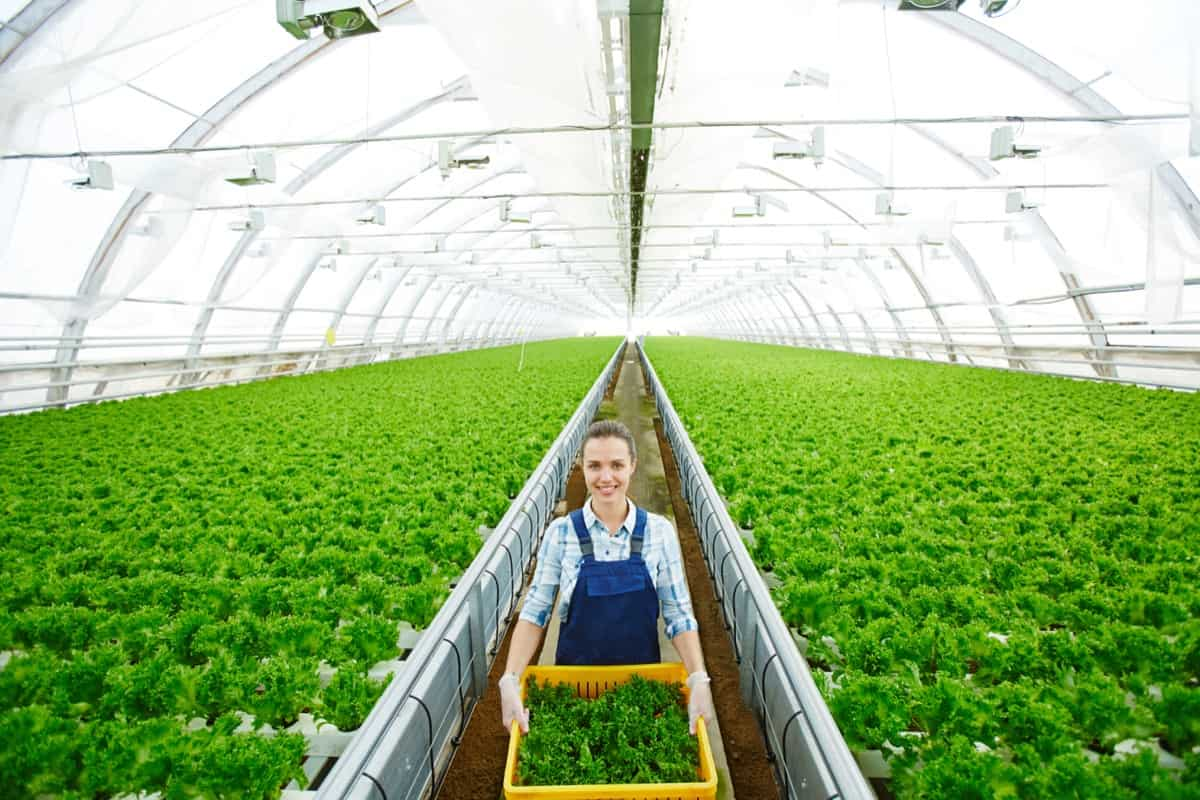
Commercial greenhouse farming in Saudi Arabia holds immense potential for producing fruits, vegetables, flowers, and nursery crops. The country can enhance food security, increase productivity, and contribute to sustainable development by embracing modern agricultural techniques and technology.
Conclusion
Greenhouse farming in Saudi Arabia offers various advantages such as year-round production, controlled environments, and efficient resource utilization. By adopting sustainable practices and leveraging automation technologies, it has the potential to contribute to food security and economic growth.
- Types of Pesticides Used in Agriculture: A Beginner’s Guide
- Economical Aquaculture: A Guide to Low-Budget Fish Farming
- 15 Common Planting Errors That Can Doom Your Fruit Trees
- How to Make Houseplants Bushy: Effective Tips and Ideas
- Innovative Strategies for Boosting Coconut Pollination and Yield
- Pollination Strategies for Maximum Pumpkin Yield
- The Complete Guide to Chicken Fattening: Strategies for Maximum Growth
- Natural Solutions for Tulip Problems: 100% Effective Remedies for Leaf and Bulb-Related Issues
- Revolutionizing Citrus Preservation: Towards a Healthier, Greener Future
- Natural Solutions for Peony Leaf and Flower Problems: 100% Effective Remedies
- Maximizing Profits with Avocado Contract Farming in India: A Comprehensive Guide
- Natural Solutions for Hydrangea Problems: 100% Effective Remedies for Leaf and Flowers
- The Ultimate Guide to Choosing the Perfect Foliage Friend: Bringing Life Indoors
- From Sunlight to Sustainability: 15 Ways to Use Solar Technology in Agriculture
- The Ultimate Guide to Dong Tao Chicken: Exploring from History to Raising
- The Eco-Friendly Makeover: How to Convert Your Unused Swimming Pool into a Fish Pond
- Mastering the Art of Delaware Chicken Farming: Essentials for Healthy Backyard Flocks
- 20 Best Homemade Fertilizers for Money Plant: DIY Recipes and Application Methods
- How to Craft a Comprehensive Free-Range Chicken Farming Business Plan
- Brighten Your Flock: Raising Easter Egger Chickens for Beauty and Bounty
- How to Optimize Your Poultry Egg Farm Business Plan with These Strategies
- Subsidy for Spirulina Cultivation: How Indian Government Schemes Encouraging Spirulina Farmers
- Ultimate Guide to Raising Dominique Chickens: Breeding, Feeding, Egg-Production, and Care
- Mastering the Art of Raising Jersey Giant Chickens: Care, Feeding, and More
- Ultimate Guide to Raising Legbar Chickens: Breeding, Farming Practices, Diet, Egg-Production
- How to Raise Welsummer Chickens: A Comprehensive Guide for Beginners
- How to Protect Indoor Plants in Winter: A Comprehensive Guide
- Ultimate Guide to Grow Bag Gardening: Tips, Tricks, and Planting Ideas for Urban Gardeners
- Guide to Lotus Cultivation: How to Propagate, Plant, Grow, Care, Cost, and Profit
- Agriculture Drone Subsidy Scheme: Government Kisan Subsidy, License, and How to Apply Online
- Ultimate Guide to Raising Araucana Chickens: Breed Profile, Farming Economics, Diet, and Care
- Bringing Hydroponics to Classroom: Importance, Benefits of Learning for School Students
- Ultimate Guide to Raising Polish Chickens: Breed Profile, Farming Economics, Diet, and Care
- Ultimate Guide to Raising Australorp Chickens: Profile, Farming Economics, Egg Production, Diet, and Care
- Silkie Chicken Farming: Raising Practices, Varieties, Egg Production, Diet, and Care
- Sussex Chicken Farming: Raising Practices, Varieties, Egg Production, Diet and Care